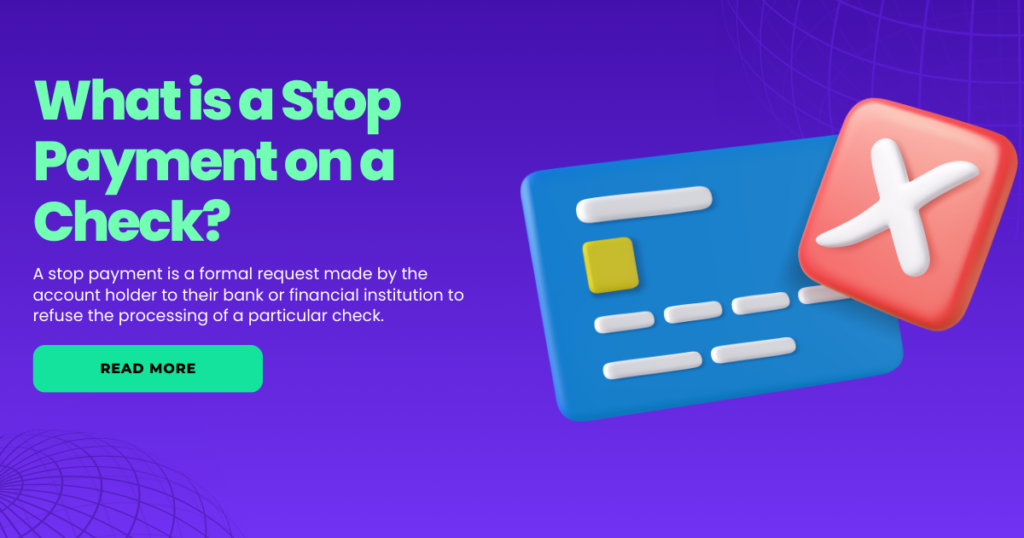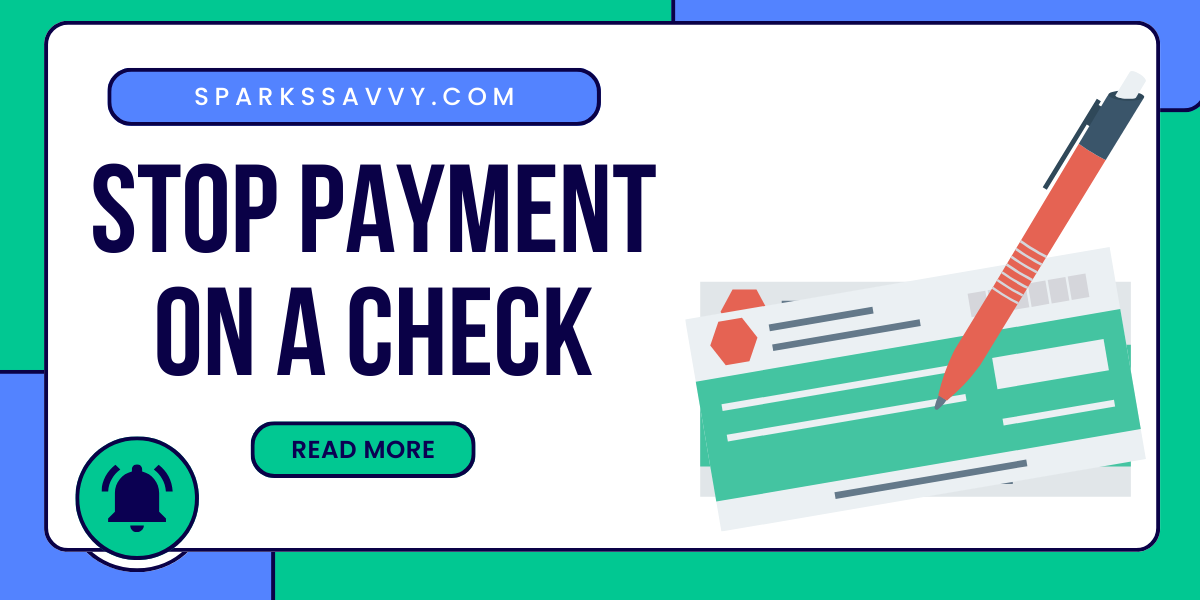A stop payment on a check is a service provided by banks that allows account holders to prevent the payment of a specific check before it clears. This action is typically used in situations where a check has been lost, stolen, or issued in error. Understanding how this process works, its benefits, limitations, and associated costs is essential for managing financial transactions effectively.
In this article, we will provide a comprehensive guide to stop payments, including step-by-step instructions, legal implications, and best practices for avoiding such situations.
What is a Stop Payment on a Check?

A stop payment is a formal request made by the account holder to their bank or financial institution to refuse the processing of a particular check. Once the stop payment order is in place, the bank ensures that the check is not cleared or paid.
- Why It Is Used: Stop payment is primarily used when a check has been lost, issued incorrectly, or needs to be canceled for any other reason.
- How It Works: The account holder provides the bank with essential details, such as the check number, amount, payee name, and issue date. The bank verifies the request and stops the transaction before the check is cashed.
How to Request a Stop Payment on a Check

1. Act Quickly
To successfully stop payment on a check, it is crucial to act promptly. Delays may result in the check being cashed before the bank processes your request.
2. Gather Relevant Information
Before contacting your bank, ensure you have the following details:
- Check Number
- Amount on the Check
- Payee’s Name
- Date the Check Was Issued
- Reason for Stop Payment
Accurate information will help the bank locate and block the check efficiently.
3. Contact Your Bank
You can request a stop payment by:
- Phone Call: Many banks allow you to initiate the process over the phone.
- Online Banking: Modern banking systems provide online options for stop payment requests.
- Visiting the Branch: For immediate assistance, you can visit your bank’s branch and file the request in person.
4. Pay the Stop Payment Fee
Most banks charge a fee for processing stop payment requests. Fees typically range between $15 to $35, depending on the bank and the type of account you hold. Some premium accounts may waive these fees.
5. Confirm the Stop Payment Order
After filing the stop payment, request a confirmation receipt from your bank. Verify the details carefully to ensure there are no errors.
How Long Does a Stop Payment Last?

A stop payment order generally remains in effect for 6 months, though this may vary depending on the bank’s policies. If the check is not presented for payment within this time frame, the order will expire. If necessary, you can renew the stop payment order for an additional fee.
Limitations and Risks of Stopping Payment
While a stop payment is an effective way to block a check, there are some limitations and risks to consider:
1. Timing Issues
If the check has already cleared or been cashed, the bank cannot reverse the payment. Acting quickly is essential to ensure success.
2. Fees Incurred
Stop payment fees can add up, especially if you need to renew the order. Always weigh the cost of the fee against the check’s value.
3. Legal Implications
Stopping payment on a check that you legitimately owe can lead to disputes or legal action. Ensure there is a valid reason for initiating the request.
4. Limited Coverage
A stop payment order only applies to a single check. If the payee has multiple checks or electronic withdrawals linked to your account, you must take additional measures to prevent unauthorized payments.
When Should You Stop Payment on a Check?
Stopping payment on a check is appropriate in the following situations:
- Lost or Stolen Checks: Prevent unauthorized parties from cashing the check.
- Errors in Payment: If the amount or payee name was entered incorrectly.
- Disputes: When you discover that goods or services were not delivered as promised.
- Fraud Suspicions: Stop payments can be initiated to prevent fraudulent transactions.
Best Practices for Managing Stop Payments
1. Use Digital Payments
Digital transactions are faster, traceable, and less prone to errors compared to paper checks. Consider using online transfers, mobile wallets, or direct deposits whenever possible.
2. Maintain Accurate Records
Keep detailed records of issued checks, including check numbers, amounts, and payee information. This will allow you to act quickly if a stop payment is required.
3. Verify Payment Details
Before issuing a check, double-check the recipient’s name, amount, and date to minimize errors.
4. Monitor Bank Statements
Regularly review your bank statements to identify any suspicious or unauthorized transactions. Early detection helps you take immediate corrective action.
Alternatives to Stop Payment
If stopping payment on a check is not feasible, consider the following alternatives:
- Account Freeze: Freezing your account temporarily can prevent unauthorized checks from clearing.
- Issuing a Replacement Check: If the check has been misplaced, cancel it and issue a new one.
- Negotiating with the Payee: Communicate with the payee to resolve disputes without resorting to stop payments.
Conclusion
Stopping payment on a check is a valuable tool for managing financial transactions and preventing errors, fraud, or disputes. By understanding how the process works, acting promptly, and following best practices, you can protect your finances effectively.
However, it is important to use stop payments responsibly, as improper use can lead to unnecessary fees or legal consequences. Always ensure you have a valid reason before initiating a stop payment request.
Read More: Zv2earning: A Comprehensive Guide | Payday Loans eLoanWarehouse



